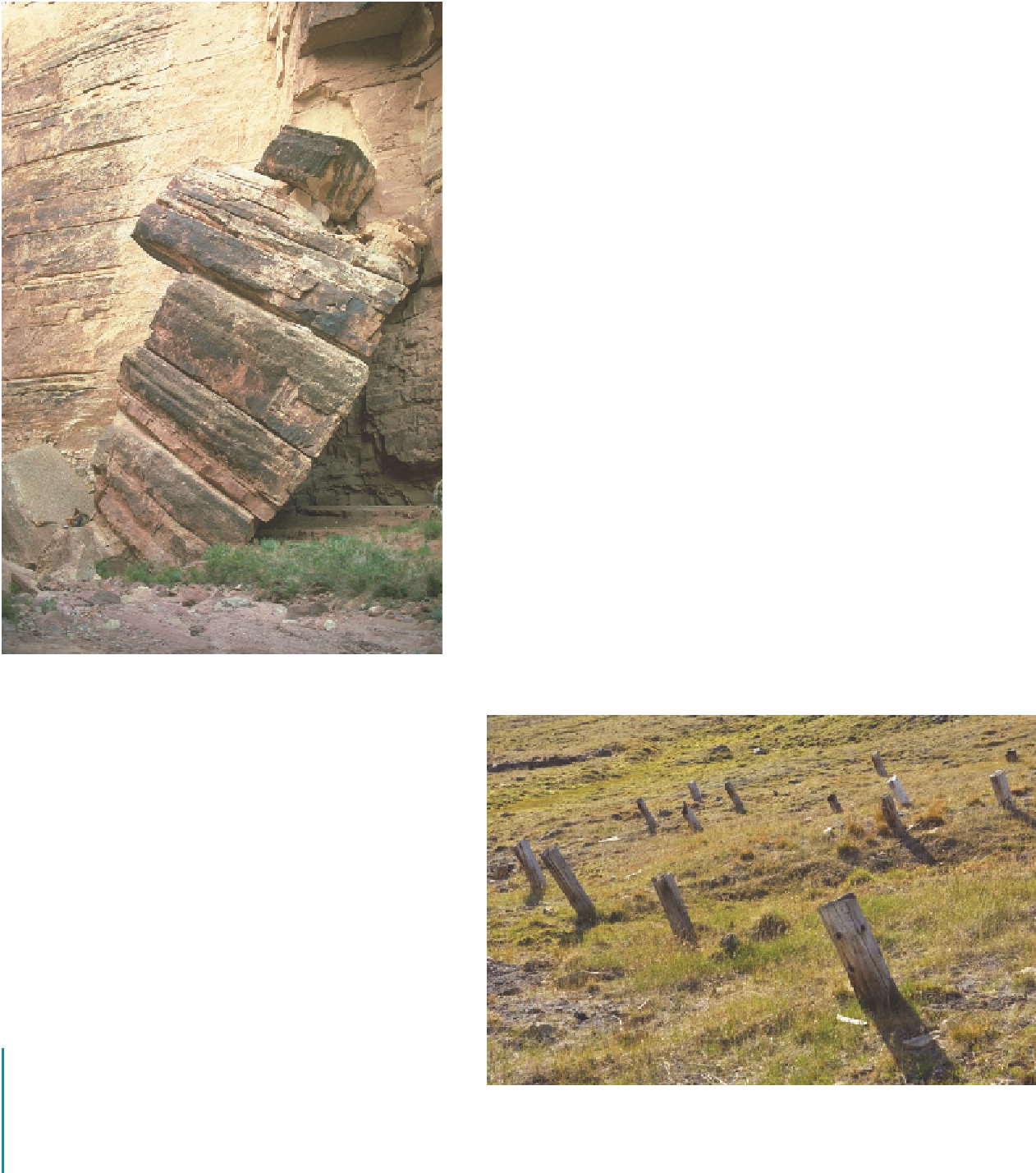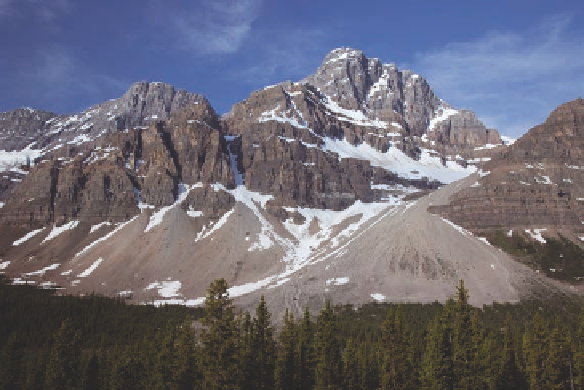Geoscience Reference
In-Depth Information
talus slopes have a relatively high angle of repose, ranging
between 35° and 40°, because boulders become lodged together
and thus support one another. In most cases, talus accumulates
in cone-shaped bodies called
talus cones
(Figure 14.17b). This
pattern occurs because most canyon walls are interspersed with
ravines and gullies that funnel boulders down where they ac-
cumulate. In places where numerous talus cones lie adjacent to
each other, the resulting landform is called a
talus apron
.
Soil Creep
The slowest mass-wasting process is appropriately called
soil
creep.
Soil creep occurs on virtually every soil-covered slope,
as the persistent force of gravity slowly pulls surface particles
downhill. In this fashion, the soil behaves as a plastic substance
that is gradually molded over time. This process is enhanced by
cycles of wetting, drying, freezing, and thawing in the soil, as
well as by disturbances caused by burrowing animals and even
people. The net result of soil creep is that the angles of hill-
slopes and the elevation of hilltops slowly decrease over time.
Evidence for this process can be seen in artificial features such
as fence posts and telephone poles that tend to shift slightly
downhill (Figure 14.18).
A distinctive kind of creep is called
soliluction
(meaning
“soil flowage”), which occurs above the tree line in tundra land-
scapes. This process is very straightforward and involves the
Soil creep
The gradual downhill movement of soil, trees, and
rocks due to the force of gravity.
Solifluction
A form of soil creep that occurs in arctic
environments where freeze-thaw processes result in lobes of soil
moving gradually downslope.
(a)
(b)
Figure 14.17 Rockfall.
(a) A typical rockfall in a steep-walled
canyon. Rockfall occurs when rocks in canyon walls are gradu-
ally loosened from the host rock mass by frost wedging and/or
large temperature changes and thus quickly fall under the force
of gravity. (b) Talus cones, such as these in Banff National Park
in Canada, form along canyon walls and mountain escarpments
where ravines and gullies funnel boulders into the adjacent valley.
Figure 14.18 Evidence of soil creep.
Soil creep occurs when
hillslopes gradually move downhill under the force of gravity.
Notice here the tilted wooden columns, which are a good sign
that soil creep is occurring.


